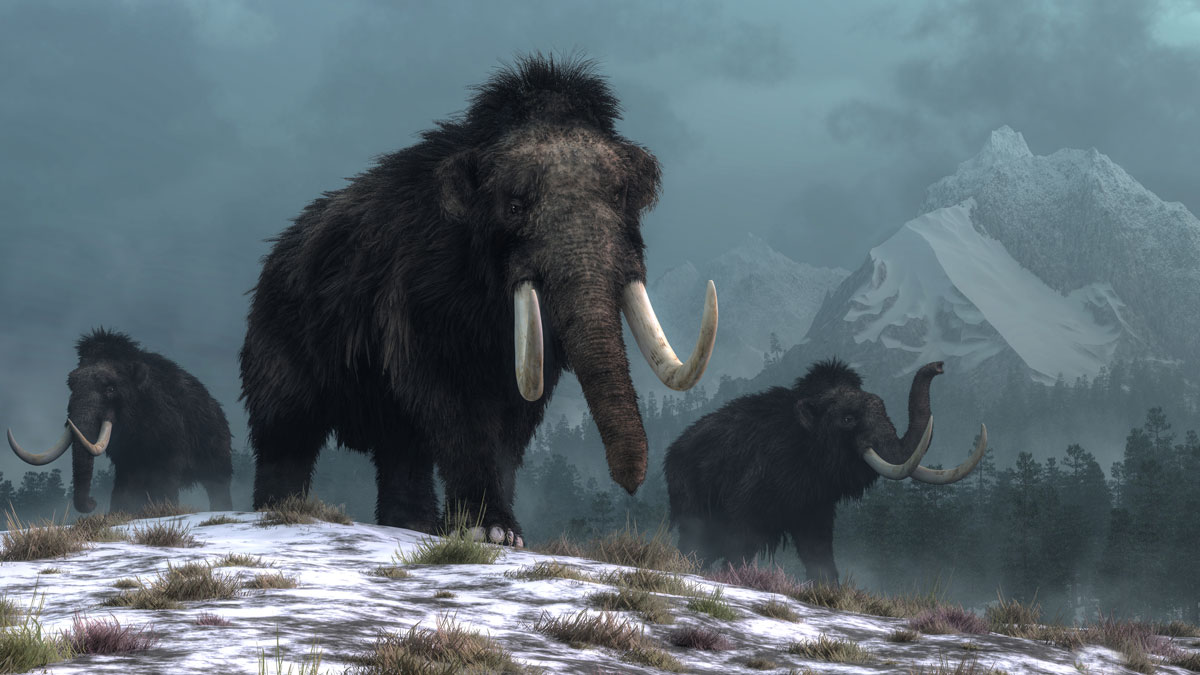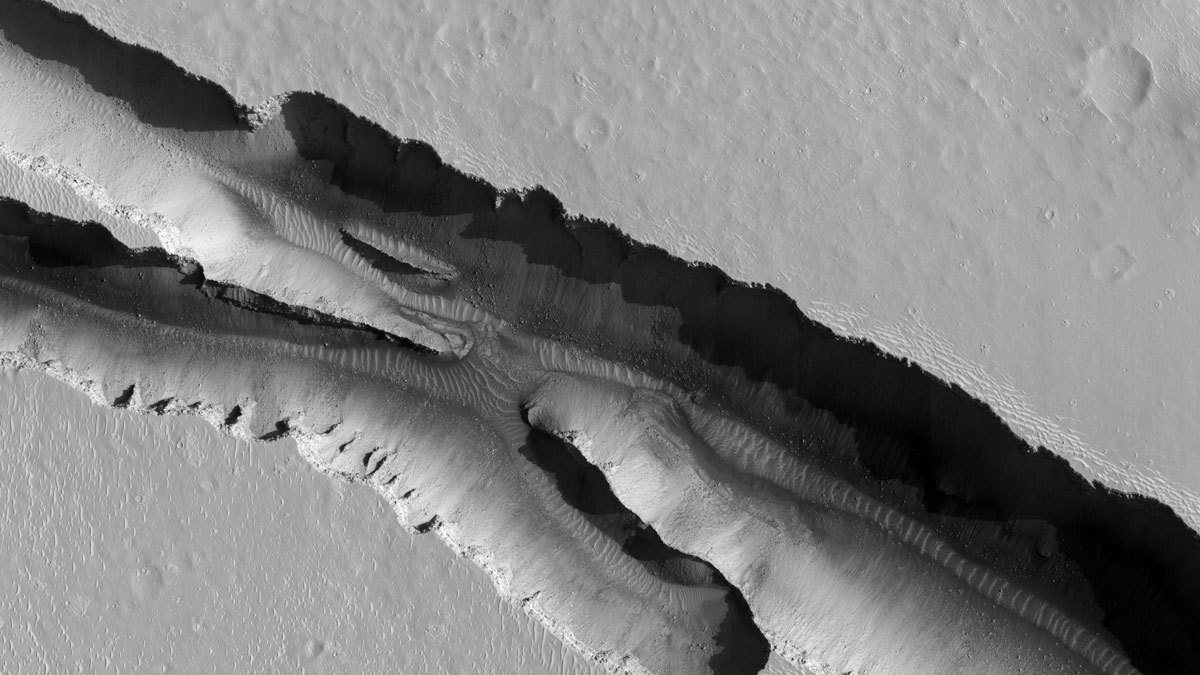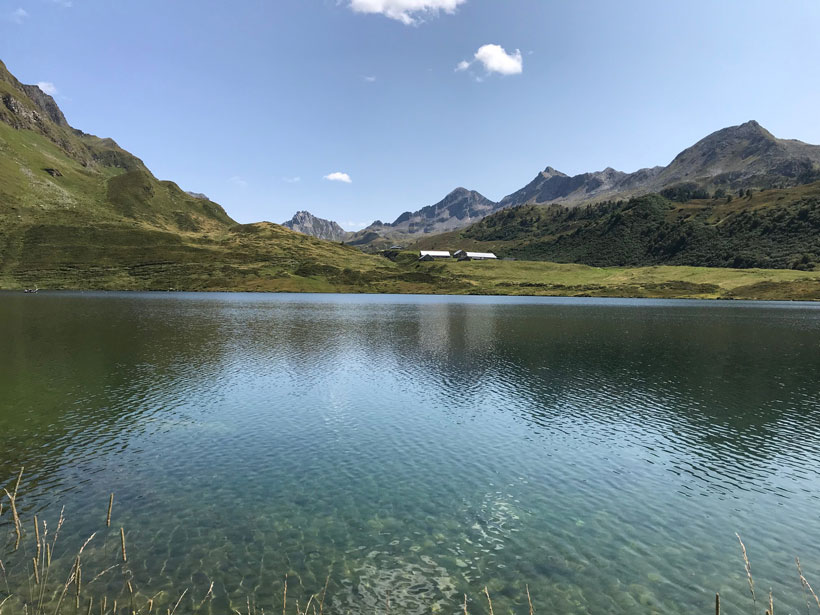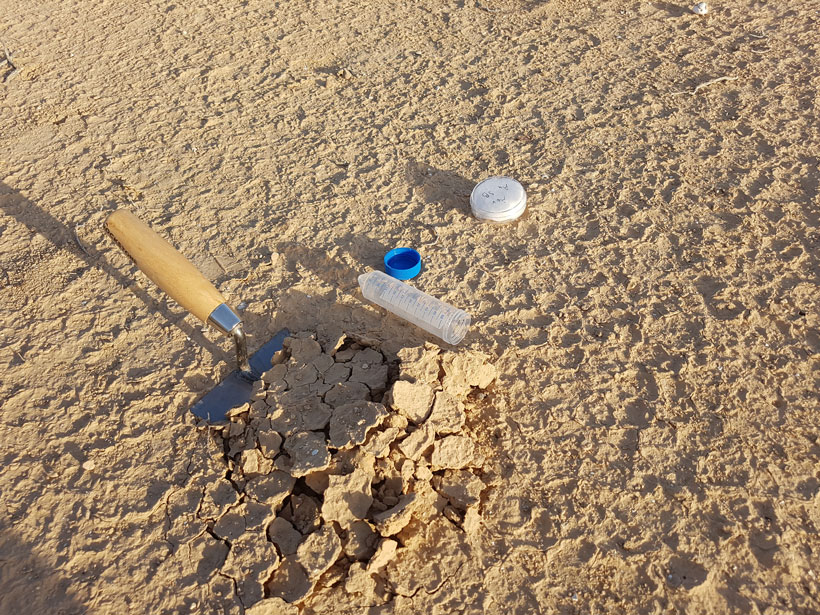Ancient plant and animal DNA buried in Arctic sediments preserve a 50,000-year history of Arctic ecosystems, suggesting that climate change contributed to mammoth extinction.
Elise Cutts
Posted inNews
Summer Could Be Earthquake Season on Mars
InSight data hint that shifting carbon dioxide ice loads, illumination changes, or solar tides could drive an uptick in marsquakes during northern summer—a “marsquake season.”
Posted inNews
Purple Bacteria Fix Nitrogen in Proterozoic-Analogue Lake
A new study challenges the assumption that cyanobacteria were the only major nitrogen fixers in the Proterozoic eon.
Posted inNews
Desert Life Conjures Organic Carbon from Thin Air
Without water, photosynthesis shuts down. To survive dry spells, desert microbes scavenge traces of hydrogen from the air and burn it for energy. Some even use hydrogen to fuel carbon fixation.




